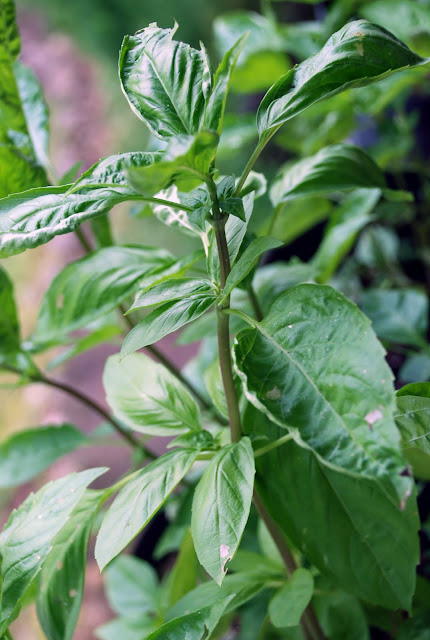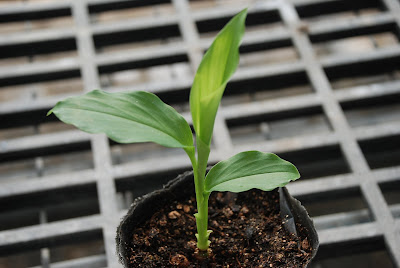Before the end of 2009, I was assigned to make the 2010 calendar for our institution. The production team suggested that we feature the indigenous herbs and spices in the Philippines, since we support the promotion of these plants as part of the indigenous plant for health and wellness RDE program of the department of agriculture. In the process, I am instructed to choose 12 most popular herbs and spices in the country. I chose sweet basil, thyme, parsley, peppermint, rosemary, cilantro, tarragon, oregano, and fennel for herbs group and chives, black pepper and turmeric for spices group.


Even they were tag as “most popular” it wasn’t for me. Actually it was my first encounter to those plants except for oregano. As I search for their uses and functions, I was amazed, that these plants – actually “ignored” plants are indeed very useful. I would like to share to you what I’ve learned in the making of this calendar…
1. Sweet Basil
As condiment, it can be used fresh or dried. But fresh basil is preferred as the dried herb loses much of its aroma. Fresh basil is used in soups and salads, stews with meat and vegetables, and dishes containing tomatoes, and in barbecue and sauces. It is the main ingredient in pesto and is popular in flavoring scrambled eggs, pizzas, pasta, chicken and grated cheese. Other uses include: medicinal (carminative, stimulant and cure for vomiting, cough, dizziness, and chronic dysentery); cosmeceutical; dental and oral products.

2. Parsley
Fresh leaves of Parsley are commonly used for garnishing and seasoning while the flakes made from dried parsley are used to flavor soups, meat and fish dishes, vegetables, salads, and savory biscuits. They can also be made into a delicious tea. For its medicinal use, parsley tea is recommended to help control high blood pressure and as a tonic drink to strengthen the bladder. It is used as an emmenagogue (stimulate menstruation). Parsley is also reported to have carminative and diuretic properties that aid proper digestion.
3. Peppermint
Peppermint is extensively used as flavoring in teas, jellies, soups, confectionery, candies, juleps, and iced drinks. It is also use to flavor toothpaste, mouthwash, perfume, cigarette, liquor, and other pharmaceutical preparations.
4. Rosemary
The fresh or dried leaves of rosemary are excellent flavoring in vegetables, meat, sauces, stews, herb butters, cream soups, fruit salads, jams, biscuits, and bread. Together with chopped parsley and sweet butter, rosemary is spread on chicken for roasting. The oil extracted from the flowering tops and leaves is used to season processed foods, but for the most part, it is used in perfumes, in scenting soap, detergents, household sprays, and other related products. Rosemary contains natural antioxidants and is popular in aroma therapy. It is also used as astringent, diuretic and to enhance menstrual flow. Rosemary is high in iron, calcium, and Vitamin B6.
5. Tarragon
Tarragon is known to give flavor on fish, poultry, pork and lamb dishes, fresh tarragon leaves are also used in salads and as garnishes. Extracted oil from tarragon contains anti-rheumatic, aperitif (stimulate the appetite before meals), deodorant, emmenagogue (stimulate menstruation), stimulant and vermifuge (medicines that expels intestinal worms) properties. It is also used to give fragrance in soaps and cosmetics.
6. Thyme

Thyme is used both fresh and dried, and is one of the few herbs that retains its flavor even after drying. It is used in folkloric medicine to ease cough and bronchitis. It contains high level of antioxidants that help fight cancer and other diseases. A thyme infusion has antibacterial properties thus it can be used as a natural rinse for fresh vegetables, particularly those that will be consumed raw. It is also good as a mouth wash, as it freshens breath and kills germs naturally.
7. Oregano
Oregano leaves which have strong flavor make an excellent addition to stuffings for meat and poultry. When finely chopped, they are used to flavor meat dishes, especially beef, lamb, and game. A good source of plant oxygen, vitamins B and C, calcium, and iron. Oregano improves digestion, metabolism, and blood circulation. It cures dyspepsia (kabag), flatulence, asthma, chronic and dry coughs, bronchitis, and effectively removes phlegm. It eases rheumatism and chronic fatigue. It is a natural antibiotic; has antiviral, antiparasitic and antioxidant properties and is a good dietary supplement.
8. Fennel
The bulb, leaves, and seeds of fennel are all used in cooking. The taste of fresh fennel is aromatic and sweet, similar to dill. The fennel bulb is a crisp root vegetable that may be eaten raw, sauteed, grilled, or added to soups and stews. It is traditionally used in medicine to treat chills and stomach problems. Making strong tea with fennel seeds is very effective in relieving bloating and gas. The leaves can be boiled, steam inhaled to relieve croup, asthma, and bronchitis. It contains anethole, an antiseptic, alongside other pharmacologically active substances. Meanwhile, fennel oil is used in the manufacture of soaps and perfumes.
9. Cilantro

Cilantro is used as a digestive aid and appetite stimulant in Indian and Iranian folk medicine. Some people find the taste overwhelming, but many love the fresh green zing of cilantro. The seeds, dried and ground, lend a warm, nutty, and orangey flavor to dishes, and are often used to flavor curries and stews. The coriander seed is also added to German sausages.
10. Chives
Japanese farmers often plant chives along borders of their plant beds, as juices from their leaves repel pests. Chive juices and extracts also exhibit antifungal and antibacterial properties. It is reported to have a beneficial effect on the circulatory system. Chives is rich in iron and calcium and is also rich in vitamins A and C, which are important antioxidants that help in the functioning of the immune system.
11. Black Pepper
Black pepper is considered as the oldest and most important spice in the world. Whole peppercorns are common ingredient in meats, soups, fishes, and pickles. The ground form is popularly used in eggs, salads, sauces, gravies, and vegetables. The fruits are acrid, bitter; has aphrodisiac, diuretic, digestive, and stimulant properties. They are useful in relieving arthritis, asthma, fever, cough, dysentery, dyspepsia, and flatulence. Black pepper is also used as carminative-reducing stomach and intestinal gas, and has been found to stimulate the activities of the heart and kidneys.
12. Turmeric o luyang dilaw
Turmeric is used to give a rich, custard-like yellow color in canned beverages and baked products, dairy products, ice cream, yogurt, yellow cakes, orange juice, biscuits, popcorn, sweets, cake icing, cereals, sauces, and gelatins. It is a significant ingredient in most commercial curry powders. Turmeric is now currently studied for possible benefits to cure Alzheimer's disease, cancer, arthritis and other biological disorders.
















